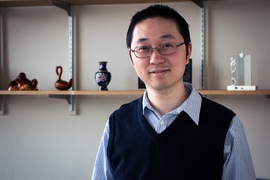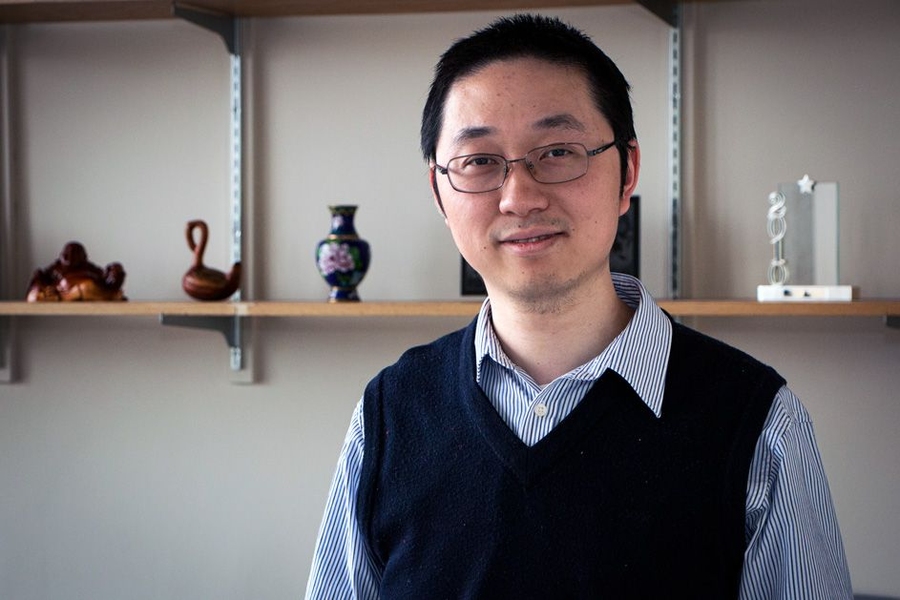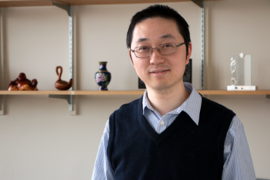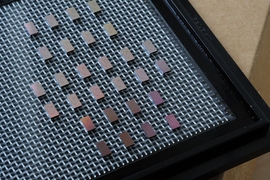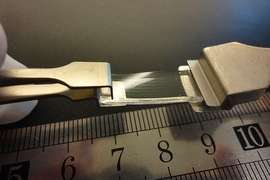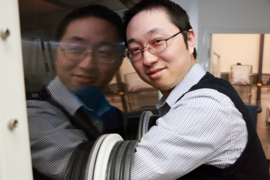Growing up in a small town in Fujian province in southern China, Juejun Hu was exposed to engineering from an early age. His father, trained as a mechanical engineer, spent his career working first in that field, then in electrical engineering, and then civil engineering.
“He gave me early exposure to the field. He brought me books and told me stories of interesting scientists and scientific activities,” Hu recalls. So when it came time to go to college — in China students have to choose their major before enrolling — he picked materials science, figuring that field straddled his interests in science and engineering. He pursued that major at Tsinghua University in Beijing.
He never regretted that decision. “Indeed, it’s the way to go,” he says. “It was a serendipitous choice.” He continued on to a doctorate in materials science at MIT, and then spent four and a half years as an assistant professor at the University of Delaware before joining the MIT faculty. Last year, Hu earned tenure as an associate professor in MIT’s Department of Materials Science and Engineering.
In his work at the Institute, he has focused on optical and photonic devices, whose applications include improving high-speed communications, observing the behavior of molecules, designing better medical imaging systems, and developing innovations in consumer electronics such as display screens and sensors.
“I got fascinated with light,” he says, recalling how he began working in this field. “It has such a direct impact on our lives.”
Hu is now developing devices to transmit information at very high rates, for data centers or high-performance computers. This includes work on devices called optical diodes or optical isolators, which allow light to pass through only in one direction, and systems for coupling light signals into and out of photonic chips.
Lately, Hu has been focusing on applying machine-learning methods to improve the performance of optical systems. For example, he has developed an algorithm that improves the sensitivity of a spectrometer, a device for analyzing the chemical composition of materials based on how they emit or absorb different frequencies of light. The new approach made it possible to shrink a device that ordinarily requires bulky and expensive equipment down to the scale of a computer chip, by improving its ability to overcome random noise and provide a clean signal.
The miniaturized spectrometer makes it possible to analyze the chemical composition of individual molecules with something “small and rugged, to replace devices that are large, delicate, and expensive,” he says.
Much of his work currently involves the use of metamaterials, which don’t occur in nature and are synthesized usually as a series of ultrathin layers, so thin that they interact with wavelengths of light in novel ways. These could lead to components for biomedical imaging, security surveillance, and sensors on consumer electronics, Hu says. Another project he’s been working on involved developing a kind of optical zoom lens based on metamaterials, which uses no moving parts.
Hu is also pursuing ways to make photonic and photovoltaic systems that are flexible and stretchable rather than rigid, and to make them lighter and more compact. This could allow for installations in places that would otherwise not be practical. “I’m always looking for new designs to start a new paradigm in optics, [to produce] something that’s smaller, faster, better, and lower cost,” he says.
Hu says the focus of his research these days is mostly on amorphous materials — whose atoms are randomly arranged as opposed to the orderly lattices of crystal structures — because crystalline materials have been so well-studied and understood. When it comes to amorphous materials, though, “our knowledge is amorphous,” he says. “There are lots of new discoveries in the field.”
Hu’s wife, Di Chen, whom he met when they were both in China, works in the financial industry. They have twin daughters, Selena and Eos, who are 1 year old, and a son Helius, age 3. Whatever free time he has, Hu says, he likes to spend doing things with his kids.
Recalling why he was drawn to MIT, he says, “I like this very strong engineering culture.” He especially likes MIT’s strong system of support for bringing new advances out of the lab and into real-world application. “This is what I find really useful.” When new ideas come out of the lab, “I like to see them find real utility,” he adds.
